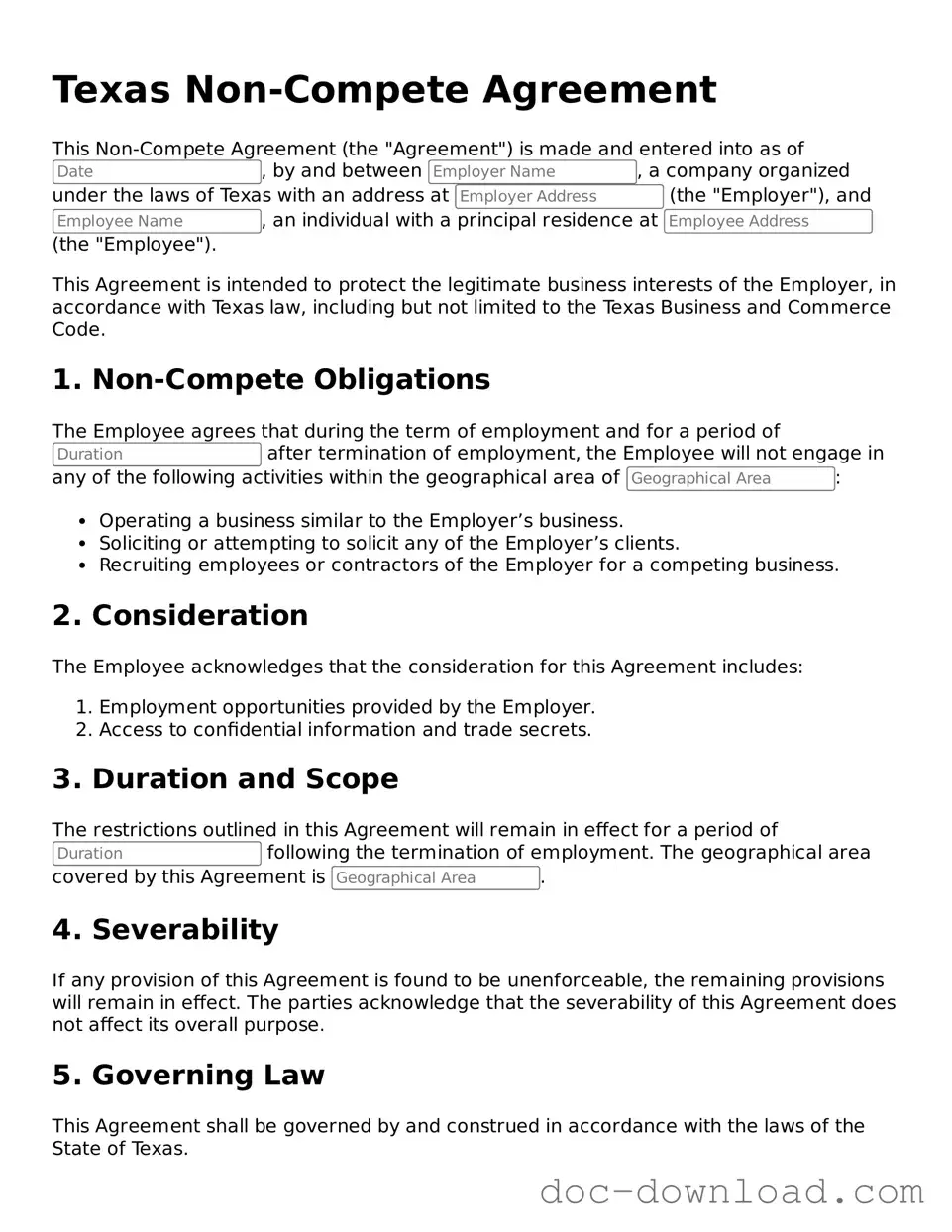The Texas Non-compete Agreement is similar to the Employment Agreement, which outlines the terms of employment between an employer and employee. Both documents establish expectations and responsibilities. However, while the Employment Agreement focuses on job duties, compensation, and benefits, the Non-compete Agreement specifically restricts an employee's ability to work for competitors after leaving the company. This creates a framework for protecting business interests while also defining the employer-employee relationship.
Another document that shares similarities is the Confidentiality Agreement, also known as a Non-disclosure Agreement (NDA). Like the Non-compete Agreement, the Confidentiality Agreement aims to protect a company's sensitive information. It prevents employees from sharing proprietary information with outside parties. Both documents serve to safeguard business interests, but the Confidentiality Agreement focuses on information sharing, while the Non-compete Agreement restricts employment opportunities in competing firms.
The Partnership Agreement is another related document. This agreement governs the relationship between business partners, detailing the roles, contributions, and profit-sharing arrangements. While it does not directly address post-employment restrictions, it may include clauses that limit partners from competing with the business after separation. This aspect aligns with the Non-compete Agreement's goal of protecting business interests from former partners.
The Franchise Agreement also shares characteristics with the Non-compete Agreement. In franchising, the franchisor often requires franchisees to adhere to certain operational guidelines and may include non-compete clauses. These clauses prevent franchisees from opening similar businesses within a specific area. Both agreements aim to protect the brand and business model, ensuring that competition is limited in a defined geographic area.
Similar to the Non-compete Agreement is the Non-solicitation Agreement. This document restricts an employee from soliciting clients or employees of their former employer after leaving the company. While the Non-compete Agreement limits employment opportunities in competing firms, the Non-solicitation Agreement specifically targets relationships with clients and employees, preventing potential harm to the business's existing relationships.
In navigating real estate transactions, utilizing a Quitclaim Deed can simplify the transfer of property ownership, particularly in informal arrangements. When engaging in this process, it's crucial to refer to reliable resources, such as the https://quitclaimdeedtemplate.com/indiana-quitclaim-deed-template, which offers templates and guidance tailored for Indiana residents looking to ensure a smooth transfer without complications.
The Severance Agreement can also be compared to the Non-compete Agreement. This document outlines the terms under which an employee will receive severance pay upon leaving the company. Often, it includes clauses that may restrict the employee from working with competitors for a certain period. Both agreements aim to provide a clear understanding of post-employment expectations and protect the interests of the employer.
The Release of Claims Agreement is another document with similarities. This agreement is often signed when an employee leaves a company, waiving the right to sue for any claims related to their employment. Sometimes, it includes non-compete clauses as part of the overall settlement. Both documents serve to protect the employer from potential legal action while providing clarity on the terms of departure.
The Employment Offer Letter can also bear resemblance to the Non-compete Agreement. This letter outlines the terms of employment, including job responsibilities and compensation. While it may not contain non-compete language, it sets the stage for future agreements, including Non-compete Agreements, by establishing the foundational relationship between employer and employee.
Lastly, the Independent Contractor Agreement is similar in that it outlines the relationship between a business and a contractor. This document may include non-compete clauses to prevent contractors from working with competitors during or after their engagement. Both agreements seek to clarify the terms of the working relationship while protecting the business's interests against competitive threats.
